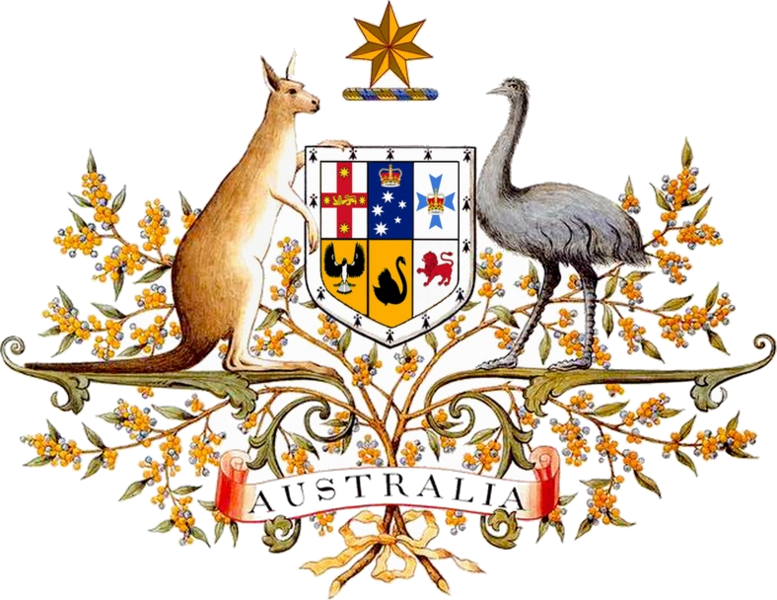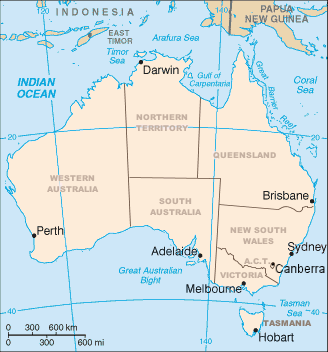

Coat of Arms of the Dominion of Canada (left); Map of the original Confederation, provinces in white (right)
On 1 July 1867, four British colonies in North America formed a new Confederation of four provinces -- this was the birth of Canada. Nova Scotia, New Brunswick, Quebec, and Ontario were the original member provinces that formed this New Dominion of Canada under Queen Victoria. New provinces would be added, of course: Manitoba would join in 1870, British Columbia in 1871, Prince Edward Island in 1873, Alberta & Saskatchewan in 1905, and, finally, Newfoundland in 1949 (Newfoundland, since 1907AD, had been its own Dominion until its joining Canada).


Coat of Arms of Australia (left); Map of Australia (right).
In 1901AD, the six colonies of Australia formed a Federation, drafting a federal constitution, and gaining a Prime Minister. These six self-governing colonies became the six states of the new nation of Australia: New South Wales, Queensland, Victoria, South Australia, Western Australia, and Tasmania.

Coat of Arms of New Zealand
New Zealand, once governed from New South Wales, received a similar dominion status in 1907AD, as its own entity as we know it today.


Coat of Arms of the Union of South Africa (left); Map of the Union (right.)
Finally in 1910AD, the four British colonies of the southern tip of Africa form the Union of South Africa as a dominion of the British Empire. The four colonies were the Cape Colony, Natal, Transvaal, and Orange River Colony, which would become known as the Orange Free State. In this case, the legislature would meet at Cape Town (Cape Colony), the Administrative capital would be Pretoria (in the Transvaal), and the high court would sit at Bloemfontein (Orange Free State). Unlike Canada, Australia, and New Zealand, South Africa would, in 1961AD, abandon Dominion status and the British monarchy to become the Republic of South Africa.

Great Seal of the Irish Free State.
We might mention, in passing, the status of Ireland as a dominion as the Irish Free State starting in 1922 and ending with their full independence as the Republic of Ireland.
Live well!
No comments:
Post a Comment